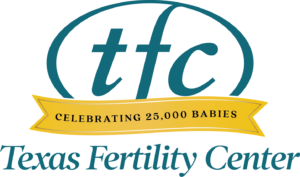
How IVF in San Antonio works
IVF, in vitro fertilization is a fantastic fertility treatment. The intent of IVF was originally to treat couples with either severe factor male infertility or blocked or damaged Fallopian tubes. It does a great job of treating both of these. IVF also works wonders in couples who have not gotten pregnant with other fertility treatment methods. Are you wondering how IVF works so well?
One month means one egg, one chance for pregnancy.
In a typical month, a woman ovulates one egg. Around one hundred eggs start to develop each month, but only one ovulates. Unfortunately, the other eggs are lost. The basic goal of fertility treatment is to get more of those eggs to ovulate each month and then make sure that sperm are present for fertilization.
In Clomid cycles, two or three eggs usually ovulate. When gonadotropin shots are used, three or four eggs are usually ovulated. Increasing the number of eggs ovulated generally increases the pregnancy rate per menstrual cycle. Then insemination is often used to get the sperm closer to the egg. Steps that must still occur are that sperm and egg must meet, fertilization must take place, the embryo needs to be chromosomally normal and continue to develop, and the embryo must make it back to the uterus and implant. That’s still a lot of steps left unaided.
With IVF, around 12 eggs are retrieved.
In an average IVF cycle, around 10 to 12 eggs develop due to higher doses of gonadotropin shots. This means that the same number of eggs a woman would ovulate over a year’s time are retrieved from the ovaries in one month. But we are not stealing from future months, just saving eggs that would have been lost that month in the quest to ovulate. Furthermore, fertilization rates are high with IVF because egg and sperm are either placed right next to each other in the same dish in the laboratory or ICSI (intracytoplasmic sperm injection) is performed to ensure fertilization. The resulting embryos are grown in the lab and the best of the best are transferred to the uterus.
IVF addresses many steps of conception.
Therefore, during an IVF cycle we are making sure many of the steps of getting pregnant actually happen (ovulation, fertilization and placement in the uterus). We are also transferring the best of many embryos into the uterus. These benefits give IVF pregnancy rates that are at least double the success rates of any other fertility treatment.



